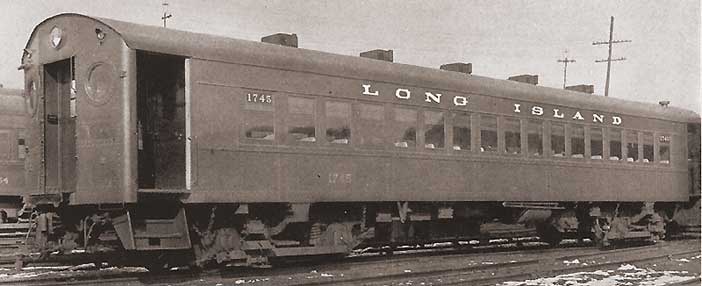
Page 27

A substation was located at Valley Stream. These regular substations were handsome brick and steel structures. Two portable substations were also built, mounted on steel box cars. These were used at Belmont Park and Locust Avenue to maintain the track voltages at those points at times of unusually heavy load, as when the racetrack traffic was at its height. They could also be used to replace regular substations should these break down or need repairs.
The third rail was a modified tee-shape, one hundred pounds to the yard in thirty-three-foot lengths. It was supported every ten feet by vitrified clay insulators on unusually long ties. The Stillwell-Slater type of guard was used, consisting of steel brackets attached to the rail and bolted to wooden uprights. Separate bolts held a wooden plank four inches above the top of the rail. At each side of grade crossings the rail flattened out into a broad, flat shoe, heavy insulated wire cable in a concrete duct carrying the current under the crossing.
The third rail was of the top contact type, with a hinged slipper cast iron shoe on a wooden beam, carried on the truck of the car, to pick up the current. The shoe was protected by a six-hundred-ampere fuse.
This work was carried out by the Board for the Atlantic Avenue Improvement, appointed by the Borough President. Where the line ran in tunnel, the transmission line was carried in niches in the side wall of the tunnel.
From Woodhaven junction south to South Ozone Park, the transmission line was carried on tall steel lattice poles. It was then carried on wooden poles built across the Jamaica Bay Trestle to Hammels, where was located Substation No. 5. A large storage battery house was installed here, so that in the event of a failure of the transmission line, four miles across Jamaica Bay, there would be enough current stored there to run the entire division for several hours. Where there were draw-bridges in the Jamaica Bay Trestle, the line was carried across them in cables sunk four feet deep in the mud in the bottom of the bay.
At an early date the transmission line was extended on wooden poles from Rockaway junction to Belmont Park, and to Valley Stream via St. Albans.

This Steel MP-54-C Electric MU Car, new in 1925, was a mainstay of Long Island Rail Road electrification. The round end windows were a signature of the LIRR's parent Pennsylvania Railroad.
Updated
©2001 The Composing Stack Inc. All right reserved